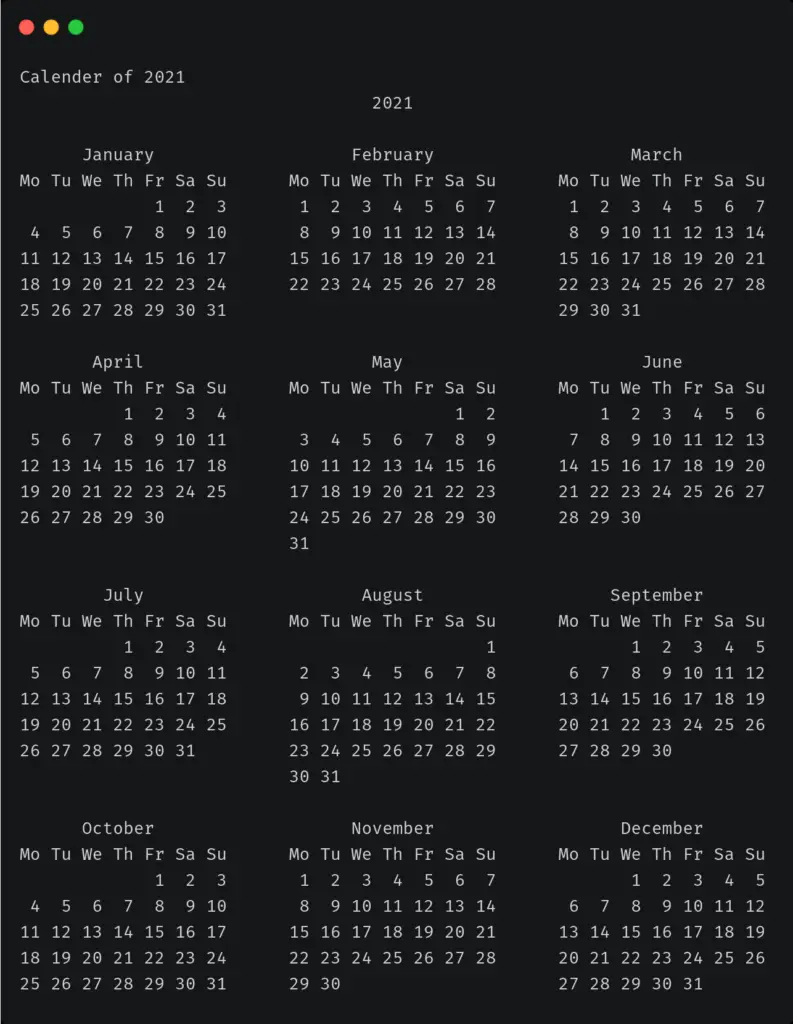Calendar in Python
Python has an inbuilt Calender Module to handle calendar related operations. Module calendar allows output calendars like the program and provides additional useful functions related to the calendar.
The functions and classes defined in this module use an idealized calendar, the current Gregorian calendar extended indefinitely in both directions. This matches the definition of the “proleptic Gregorian” calendar in Dershowitz and Reingold’s book “Calendrical Calculations”, where it’s the base calendar for all computations. Zero and negative years are interpreted as prescribed by the ISO 8601 standard. Year 0 is 1 BC, year -1 is 2 BC, and so on.
By default, these calendars have Monday as the first day of the week, and Sunday as the last (the European convention).
Code
Example #1: Display Calendar of a Given Month.
#Display Calendar of a given month
import calendar
y=2000
m=2
print(calendar.month(y,m))
#Follow @code_snailOutput

Example #2: Display calendar of a given year.
# Display calendar of a given year
import calendar
print("Calender of 2021")
print(calendar.calendar(2021))
#Follow @code_snailOutput:

More functions here: https://docs.python.org/3/library/calendar.html
I hope you like this code. For more awesome code press the bell icon. Share it with your friends.
Also see,